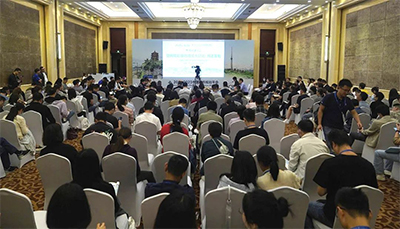


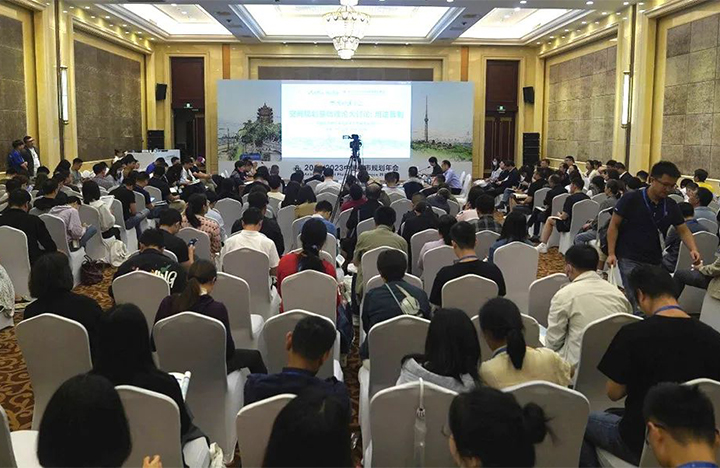
Introduction
On the morning of September 24, 2023, the 2022/2023 Annual Academic Dialogue of the Annual National Planning Conference (hereinafter referred to as "ANPC"), hosted by UPSC and organized by the Academic Committee of UPSC (hereinafter referred to as "the Committee"), was held in Wuhan, focusing on the in-depth discussion of the fundamental theories of spatial planning, specifically addressing "Land Use Control."
The academic dialogue was hosted by Professor Sun Shiwen, the Executive Director of UPSC, President of the Academic Committee of UPSC, and a professor at Tongji University. Over 300 participants attended this dialogue, including members of the Academic Committee for the 2022/2023 ANPC and representatives from both the academic and industry sectors. The discussion focused on the fundamental theories of land use control in spatial planning, and several distinguished guests made insightful remarks, leading to the following key points and recommendations (in the order of their speeches).
The core of land use control is the management of development.
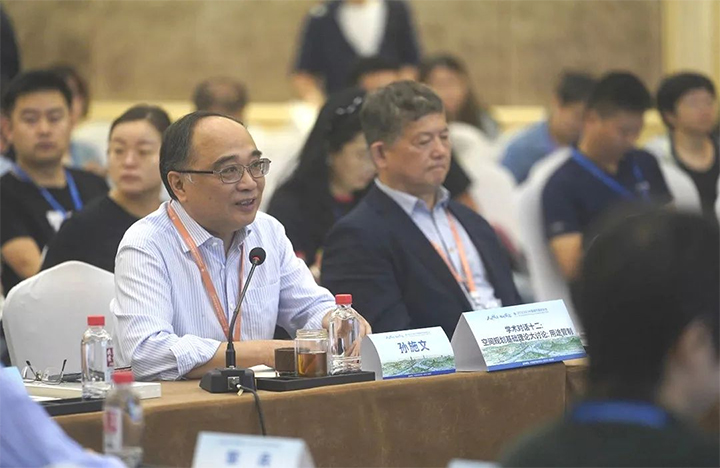
Sun Shiwen
Executive Director of UPSC, President of the Academic Committee of UPSC, Professor at College of Architecture and Urban Planning, Tongji University
Director Sun Shiwen first introduced the series of dialogues on fundamental theories and elaborated on the topic. He emphasized that land use control is an integral part of the entire planning process and serves as the core and fundamental aspect of planning. Its essence lies in the regulation of development. Within the context of national spatial planning, land use control extends beyond urban areas to include rural and ecological regions. Therefore, during this period, land use control is an extremely important topic.
Land spatial reform begins with the reform of land use control.
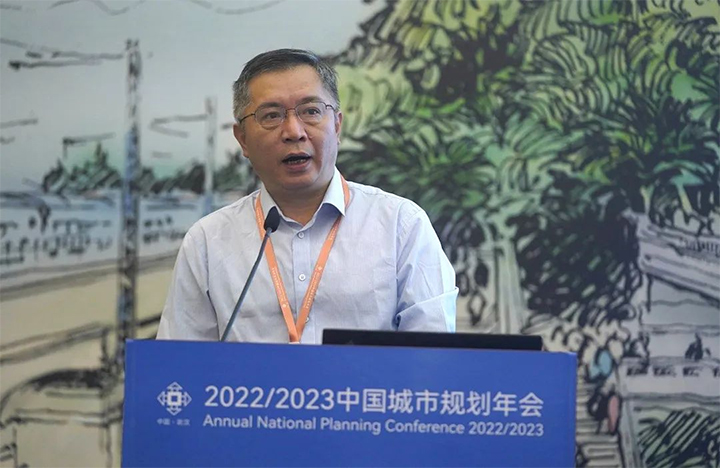
Lin Jian
Executive Director of UPSC, Professor at College of Urban and Environmental Sciences, Peking University
Professor Lin Jian first discussed how to understand land use control in the context of the "two unifications" responsibility. He emphasized that land spatial reform begins with the reform of land use control. He proposed that we can understand different types of land use in China by considering both "regional-type" land spatial areas and "element-type" land spatial areas. Regional disorder and uncontrolled elements were used to be problems in the past. Land spatial planning aims to unify both the regional and element aspects, using regions to guide the implementation of elements.
Furthermore, Professor Lin outlined the current tasks of land use control within the context of national land spatial planning. He stated that the essence of land use control is the regulation of the development of natural resource carriers. Specific tasks include planning management, admission and change of land use, and important complementary policy tools.
Lastly, Professor Lin suggested that several key considerations should be considered for land use control in the context of national land spatial planning. The first one is synergistic relationship, including the relationships between land use control and land spatial planning, land use control and natural resource management, land use control and resource management and the comprehensive conservation system, as well as the relationship between land use control and natural resource asset ownership and value realization. Secondly, he emphasized the importance of holding key boundaries, and thirdly, he stressed the significance of a solid theoretical foundation.
Theoretical Issues in Land Use Control.
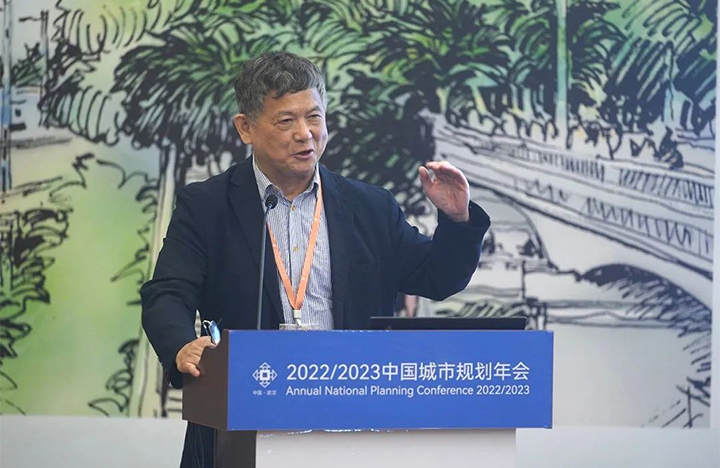
Zhao Min
Vice-president of the Planning Implementation Division of UPSC, Professor at College of Architecture and Urban Planning, Tongji University
Professor Zhao Min believes that national land spatial planning and land use control are a dual relationship, and both are issues within the five-level, three-category planning system. Theoretical issues lie behind land use control, involving value judgments and empirical judgments, which require standardization and empirical research. He believes that wealth does not come from the land itself but the rise of manufacturing and industrialization. Land supply should be aligned with demand, land prices should be determined by demand, and valuable land parcels that can enter the market for trading constitute only a small portion of urban construction land.
Professor Zhao proposes that the role of land use control is manifested at three levels: by authorizing city and county governments with spatial development rights and protection responsibilities through planning formulation and approval, enabling the allocation of spatial resources; by implementing spatial development through detailed planning, land acquisition, construction of municipal facilities, and converting spatial resources into land assets; and finally, by managing land assets, which involves granting development rights to landholders through planning conditions, planning permits, and allowing landholders to exercise their land development rights through planning control.
Furthermore, Professor Zhao suggests that understanding land use control involves five sets of relationships: discretionary authority and constraint authority, permit systems and empowerment systems, substantive control and procedural control, development control and use control, and public interest and public benefit.
Land Use Control from a Practical Perspective.
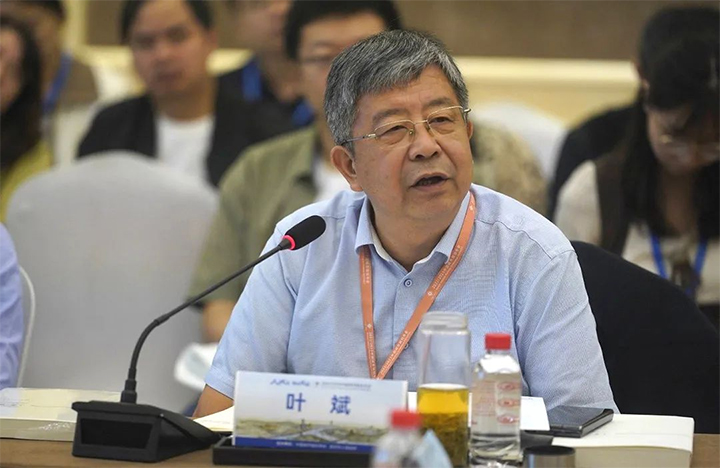
Ye Bin
Executive Director of UPSC, Memeber of the Academic Committee of UPSC, Vice Secretary-General of the Standing Committee of the People's Congress of Nanjing City
Director Ye Bin, in conjunction with Nanjing's practical experiences, discussed land use control from three aspects: classification, basis, and control methods. Firstly, using Nanjing as an example, he outlined four categories of land use control in the context of national land spatial planning: agricultural land conversion control, construction land use control, ecological red-line land use control, and agricultural land control. Secondly, He emphasized that the basis for these four categories of land use control comes from local laws, regulations, technical standards, and various relevant national land spatial planning documents. He called for the swift establishment of control standard for aspects like the ecological red-line and internal land use control within agricultural land. Finally, using the example of land use control on collectively-owned farmland, Ye Bin expressed the hope of improving and optimizing the methods of land use control.
Differences in Land Use Control Between Eastern and Western Countries.
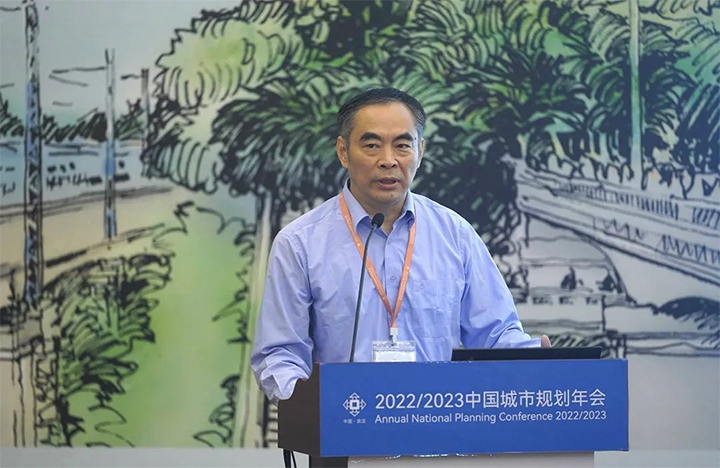
Zou Bing
Director of UPSC, Vice-president of the Planning Implementation Division of UPSC, Memeber of the Academic Committee of UPSC, Chief Urban Planner of Shenzhen Urban Planning and Development Research Center
Director Zou Bing first began by analyzing the difference between control and governance, starting from the concept of land use control. He believed that the essence of land use control lies in the regulation of land development and utilization activities, rather than the use itself.
Next, Zou Bing compared land use control in Western countries with that in China. He pointed out that China's fundamental land management system is the land use control system, a mandatory management arrangement that reflects the will of the state. This system revolves around the protection of arable land and includes regulations for the conversion of different land use types.
Furthermore, Zou Bing highlighted that China's land use control system is based on the principle of land public ownership and is essentially different from the Western system of land private ownership. The former is guided by the fundamental principle of safeguarding national security, while the latter is based on protecting private rights such as externalities and adjacent rights.
Lastly, Zou Bing emphasized the distinguishment of the characteristics of land use control in different types and at different levels. He believed that the essence of land use control in national land spatial planning is the regulation of the developers’ and users’ behavior. This should avoid the drawbacks of relying solely on land parcel management and ensure that the focus is not only on outcomes but also on the process.
The land use control in detailed planning.
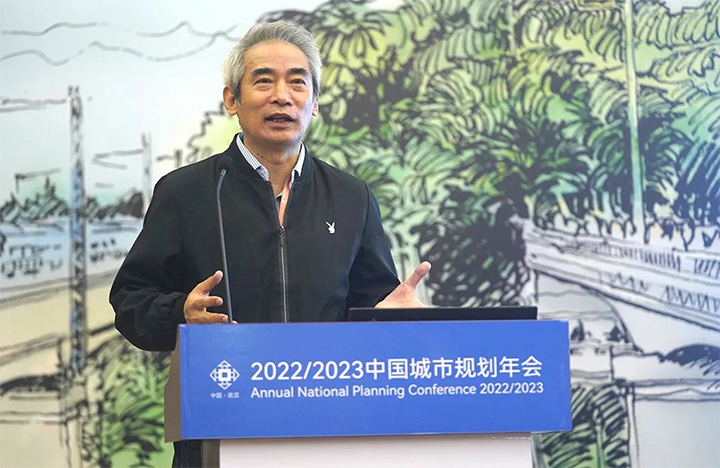
Lv Chuanting
Director of UPSC, Memeber of the Academic Committee of UPSC, President of the Detailed Planning Committee, The former director of the Guangzhou Urban Planning Compilation and Research Center
Director Lv Chuanting initially discussed the relationship between detailed planning and land use control from a conceptual standpoint. He believed that detailed planning involves making real-time arrangements for specific land parcels, land use, and development intensity. It serves as the basis for carrying out land spatial development and protection activities and implementing land use control.
Furthermore, Lv Chuanting contended that land use control represents the lowest common denominator for various levels and types of spatial planning and policies related to spatial utilization. It encompasses the control measures related to land use, intensity management, and spatial guidance.
Lastly, Lv Chuanting emphasized that detailed planning operates within a dynamic mechanism, and land use control should be similarly dynamic and adaptable.
Land Use Control in the Balance of Land Development Rights and Land Planning Rights in National Land Spatial Planning
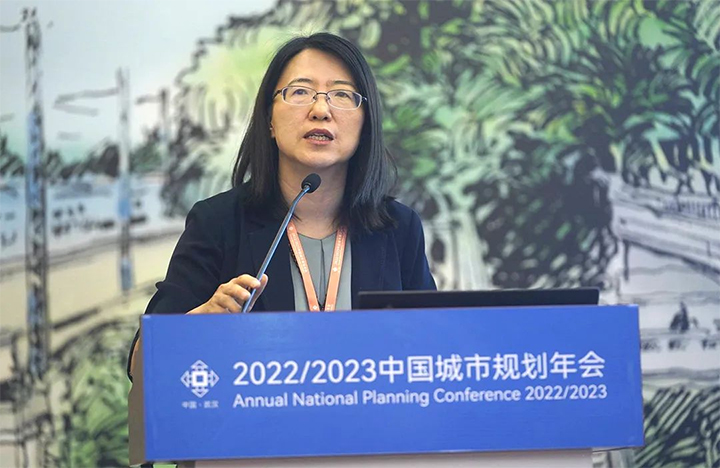
Tianli
Vice-president of the Planning Implementation Division of UPSC, Professor at School of Architecture, Tsinghua University
Professor Tian Li began her discussion by exploring the essence of land use control in national land spatial planning. She believed that control is about managing the relationship between public authority and private rights. National regulatory authority derives land planning rights, while land ownership rights give rise to land development rights.
Next, Professor Tian Li introduced a tension model between development rights and planning rights. She believed that achieving a balance between these rights is essential for achieving equilibrium in the governance system. This balance requires managing the relationship between the central and local governments and between public authority and private authority.
Furthermore, Professor Tian Li developed a framework system for land use control, which includes "two domains and three levels." She stressed the importance of both rigidity and flexibility in land management during the coordination process of development rights and planning rights. She proposed a transition from top-down, blueprint-style land use control with rigidity to a governance-oriented approach that combines top-down and bottom-up elements, allowing for a more flexible approach to land control.
Shanghai's Experience in Land Use Control for National Land Spatial Planning
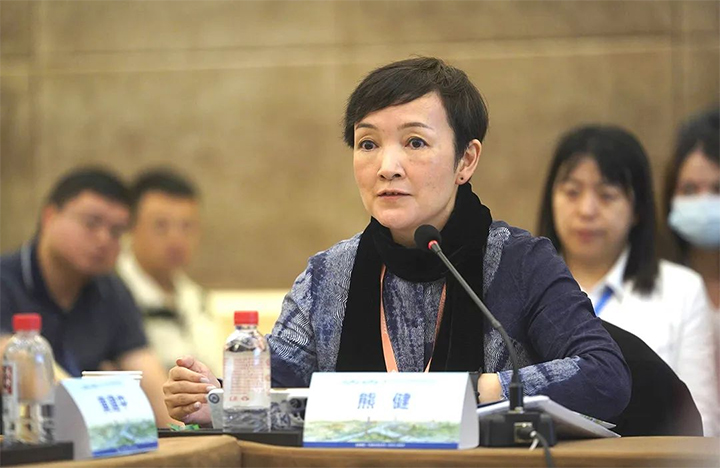
Xiong Jian
Director of UPSC, Secretary of the Party Committee and Deputy Director of Shanghai Urban Planning & Design Research Institute
Director Xiong Jian proposed, first and foremost, the importance to clarify the relationship between land use control and spatial planning. She emphasized that land use control is an important method of implementing spatial planning and is essentially about planning and implementation. From a practical perspective, the focus should be on the core content of land use control, specifically the relationship between planning formulation and implementation, highlighting that land use control in national land spatial planning is a process of administrative management based on spatial planning implementation. Addressing current issues, it should correspond to the functions of comprehensive spatial planning for all areas and elements, improving rules for ecological, agricultural, and marine land use control. Approaching the issue from a perspective of streamlining governance, the optimization of approval, review, and management processes should be prioritized. Additionally, promoting spatial digitization transformation to enhance management efficiency is essential.
Secondly, the spatial planning on which land use control is based should not be a single-layer, static blueprint but a dynamic, coordinated, and feedback-driven process achieved through the establishment of a hierarchical classification system and the realization of planning objectives and control elements. Taking Shanghai as an example, land use control should not only come into play after planning approval but also be considered synchronously during the planning formulation process. Therefore, a top-level design for land use control is necessary during the planning formulation phase. In this stage, different scales, multiple levels, and various types of planning land use zoning should be constructed to address the basis for planning admission, determining what issues should be addressed at what scales.
Land Use Control in Rural Areas
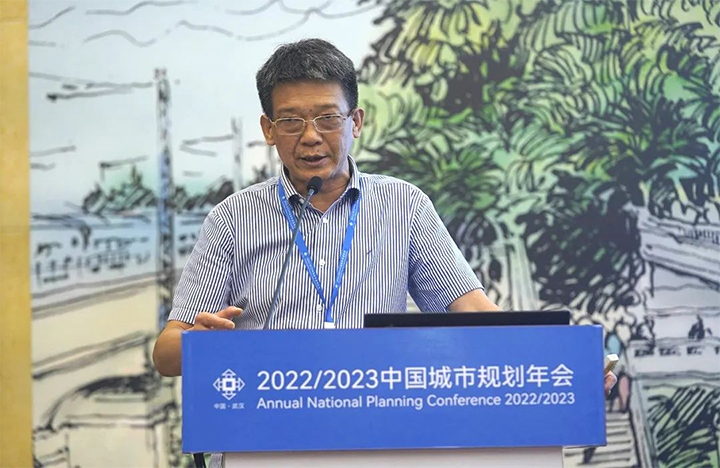
Duan Degang
Vice-president of the Rural Planning and Construction Division, Memeber of the Academic Committee of UPSC, Professor at School of Architecture, Xi'an University of Architecture and Technology
Professor Duan Degang discussed land use control in rural areas, focusing on key control points, challenges, and reflections. Firstly, Professor Duan believed that the key points of land use control in rural areas are to ensure food and ecological security and promote agricultural modernization. The basis for this control is national land spatial planning, and the means of achieving it include supervision and inspection.
Secondly, he pointed out that current land use control in rural areas faces three challenges which are goals and reality, basis and foundation, and means and operation. To address these challenges, Professor Duan suggested promoting reduced development in villages and achieving more efficient land use, improving the accuracy of surveys and the timeliness of supervision to implement a balanced approach to land use control, and enhancing the flexibility and tolerance of control regulations to accommodate both rigid control and flexible demands. This can lead to increased local institutional innovation and a more balanced combination of rigidity and flexibility.
Land use control should be differentiated by land activity levels.
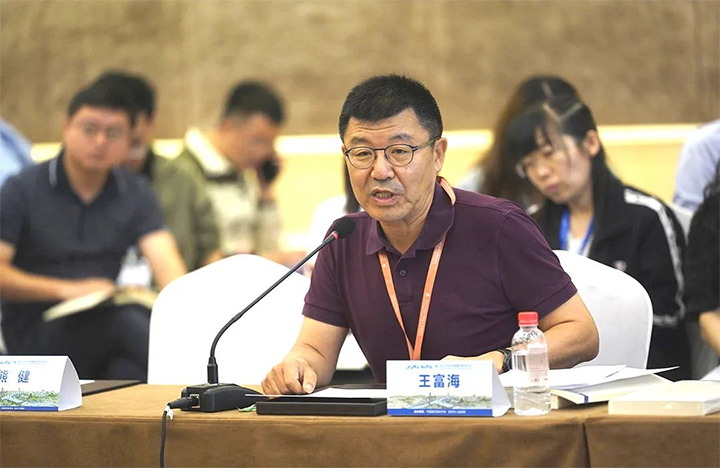
Wang Fuhai
Director of UPSC, Vice-president of the Academic Committee of UPSC, Chairman of Shenzhen Leo Austrian Planning and Design Consulting Co., Ltd
Director Wang Fuhai began by distinguishing the concept of land use. He considered land use as a type of land that affects urban development and land value. Secondly, he believed that major land use categories should correspond to functional rights, representing the division of departmental powers. Furthermore, he emphasized the differences in land activity levels, suggesting that some land types are better with lower activity levels (e.g., ecological and agricultural land), while others have higher activity levels. Different land activity levels require distinct regulatory rules in national land spatial planning. Therefore, Wang Fuhai proposed that using broad land categories can address land use control issues. This means categorizing land as agricultural, construction, unused, ecological, etc., for the management of areas with low land activity. On the other hand, land use control methods for functional classification within urban areas cannot be applied directly and require a different set of management approaches.
Finally, Director Sun Shiwen provided a summary of the academic dialogue. He noted that the experts and scholars actively expressed their viewpoints during the discussion, engaging in a broad and lively discussion on the main topics for a duration of three hours.
Source: <https://mp.weixin.qq.com/s/gyjHKONZWvCl7TzvnvjHQA>
Translated by He Huiling